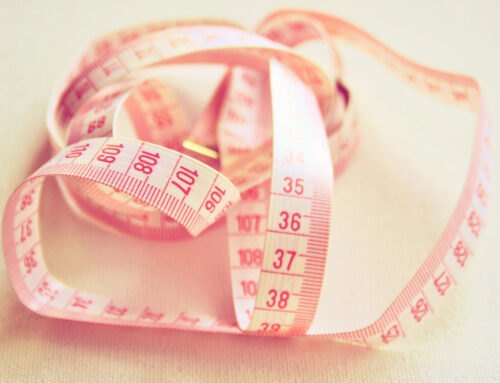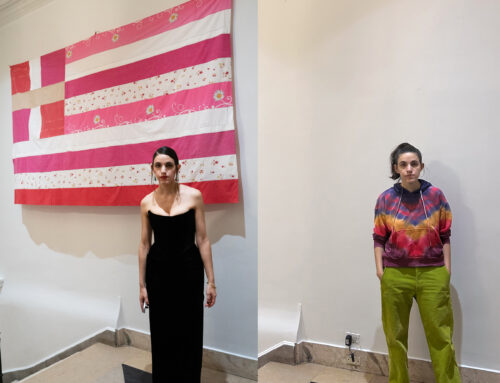Why is astrology looked down upon but not Fantasy Football?

Across centuries and continents, what is considered traditionally feminine is often considered inferior. It’s so ingrained in our society to associate femininity with something less than that we hardly notice it anymore. The associations we’ve been taught to make, from careers to hobbies to what we wear, color our entire lives. Masculinity is rational, serious, professional, and valuable, while femininity is silly, emotional, unprofessional, and unimportant.
It seems as if there is a rule that dictates that women must enjoy feminine things and men must enjoy masculine things. Cocktails, dresses, the color pink, and childcare are feminine-coded. Beer, the color blue, and suits are male-coded. These are the rules generally regarded to be true and universal. A closer look would show us that none of these rules are natural or concrete, and what is traditionally masculine or feminine not only shifts over time, but follows a distinct misogynistic pattern.
Heeled shoes are a great first example. Initially, they were worn in Persia as horse riding shoes. Once they were introduced to Europe’s aristocracy around the 16th century, they were seen as masculine, since horse riding was a man’s sport. As lower classes began wearing heels too, the shoes that the aristocracy wore became higher and even more impractical and uncomfortable as a show of status. Heels became more and more ornate, decorated with ribbons and colored with expensive, flashy dyes in an effort to show off the wearer’s wealth and power.
This was short-lived. As more women began wearing them, men reflexively dismissed heels as frivolous and silly. Their origins as manly riding shoes had been completely forgotten. Heels became associated with femininity. They were suddenly seen as impractical and ridiculous, a woman’s shoe, and therefore unfit for a man to wear. Nowadays heels teeter-totter between being a professional woman’s shoe, and a scandalous and inappropriate symbol. Sensible black pumps are for the workplace, but glittery pink platforms are unprofessional. The days when heavily decorated footwear was only for aristocracy are long gone.
Astrology, controversial as it may be, has followed a similar path. Once practiced by wise men and valued as useful insight into the future, the practice fell out of mainstream favor as science took over. While science should take over, astrology, the most popular form of divination, shouldn’t be dismissed as frivolous.
Carol Gilligan’s theory on the different ways women and men conceptualize and interact with the world is a reason why astrology mainly attracts women’s attention nowadays. According to an empirical study published in her book In a Different Voice, she discovered that women adhere to what she calls the Ethic of Care, while men follow the Ethic of Justice. In other words, women view the world through the lens of relationships and social responsibility, in contrast to the value men place on autonomy and self-reliance. Critics of Gilligan’s findings assert that this difference is due to upbringing and societal expectations, rather than something innate. Be that as it may, it still offers some insight into why women are drawn to astrology more than men. Women place a higher value on cultivating and maintaining deep emotional bonds and harmony in a community – and astrology often centers on exactly that. It’s also no secret that a close-knit society is more efficient and secure than an estranged one.
People are drawn to astrology because it is a way to find guidance for everyday problems. While science is helpful in answering a lot of the questions we have about the way things work, such as gravity or photosynthesis, astrology is more of a form of support—it’s accessible and easy to understand. For those who need something to lean on in times of stress, it can be a comforting reminder that whatever they are going through is temporary (until the planets are no longer in retrograde, for example). Magazines are one of the most accessible sources of astrological information in which astrological columnists regularly remind readers to practice self-care. Journaling, meditation, regular exercise, and contact with nature are trademarks of astrological advice and of basic, science-supported tips for looking after mental health. Another pillar of astrology is to be mindful of how you interact with others. Regular readers of horoscopes can attest to the fact that they’re frequently reminded to be wary of miscommunication. In other words, they are being instructed to be clear and honest about their intentions – something that is, in my opinion, excellent advice.
As a result, astrology is associated with femininity. Those who choose to live their lives by adhering to what is masculine and abstaining from what isn’t often do not engage in it. Words like illogical, emotional, and useless are employed to describe astrology (and many other feminine hobbies). This is in contrast with logic, practicality, and efficiency – the words that allegedly best describe masculine hobbies. This gender split has been proven through studies, such as a 2005 Gallup UK poll, in which over twice as many women in the UK believed in astrology compared to men, as well as in a 2017 Pew Research Center study which found that 20 percent of adult men in the US believed in astrology as opposed to 37 percent of adult women.
The difference lies in how people perceive astrology, which becomes especially trivialized when men make efforts to distance themselves from indulging in the medium at all. It’s not that women necessarily believe that astrology dictates the world’s processes, but women who ask what their date’s zodiac sign is are probably just trying to make conversation. Instead, they’re seen as shallow and superstitious. On the other hand, men who antagonize the fans of their rival sports team are not subjected to the same treatment. Watching the game on weekends and screaming at the TV is normal. Yet scheduling a pedicure because the moon is in Pisces is nonsensical (the sign of Pisces rules the feet). There is a notable double standard when it comes to how the same practices are perceived along gender lines.
Everyone knows what a boyband is, and the craze that young girls had over One Direction, but not everyone is familiar with Beatlemania. The Beatles’ origin as a boyband has been scrubbed from popular memory.
Beatlemania was a phenomenon where young female fans of the band exhibited erratic behavior. This was new in the 60s, but now fangirling is well-established. Screaming girls climbing (and falling off of) trees and throwing jelly babies on stage shook the world for the first time. Already, these girls were looked down upon, and (male) adults struggled to find explanations for their behavior. The band and their fans were looked down upon. They were criticized for their music and style, which was a departure from the aggressively masculine edge of other contemporary rock musicians. Young female fans puzzled psychologists who tried to understand why they were acting out. Once again, femininity, and its ties to emotion, irrationality, and community, were mocked. Somehow, over the years, the female fans who supported the band in its early days were forgotten, or dismissed as hysterical and unimportant.
The Beatles are now considered pioneering yet classic, talented, and worthy musicians. As the Beatles carved their way into the world of music legends, they gained an air of respect. Would the same be said about One Direction? Or 5 Seconds of Summer? While it’s too early to determine what sort of legacy today’s boy bands will leave behind, it’s certainly interesting to compare with the past.
As explained through the example of astrology, men are quick to dismiss women’s interests by insisting they have no value. Fangirling is necessary, too! In the 60s, it was an outlet for girls to express their feelings and break free from the puritan image they were expected to follow. Beatlemania occurred around the time feminism was reemerging, and the ability to be able to let loose and enjoy yourself in a crowd was something to fight for. Idolizing a boy band like the Beatles was an early exploration of their sexuality, and many recall the craze with fondness. A strong feeling of community and belonging underlines the experiences of many. Being a fan of the Beatles meant aligning yourself with a revolutionary musical movement.
Fans of many boy bands today act in the same way. Fandom is a life raft for many adolescents during this tumultuous time in their lives. It is something to think about and hope for. Concerts bring like-minded individuals together. Social media of course plays a big role in this too, as fans can connect online and form communities over artists and their song lyrics, paparazzi photos, and interview comments.
The 2001 film starring Reese Witherspoon, Legally Blonde, subverts the ditzy, dumb girly girl trope. Elle Woods, the protagonist, is constantly assumed to be unintelligent because she enjoys dressing up in hyper-feminine styles. She wears pink head to toe, her pen has a massive pom-pom, and she prints her resume on scented pink paper. And then, she got into Harvard Law. The assumption people made when they saw her in the film is that she must be shallow and vapid since she is so unapologetically feminine. Her counterpart, Vivian, dresses in subdued tones, wears turtlenecks and keeps her hair in a conservative bob. She embodies the typical bookish aesthetic, trading feminine things for more practical clothes. The film’s main idea is that both types of women are intelligent and valuable, regardless of their aesthetic choices. Essentially, the film argues that femininity does not mean the absence of intelligence or substance.
Trading interests between genders has been going on for centuries, but oftentimes, when women adopt male interests, those are the ones that fall off in society’s esteem. By familiarizing ourselves with the unstable nature of what is deemed acceptable (usually masculine-adjacent) and what is silly (feminine-adjacent), we can see that there are no real rules—besides ingrained misogyny and stereotypes about masculinity and femininity.



